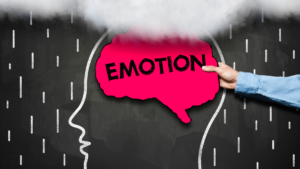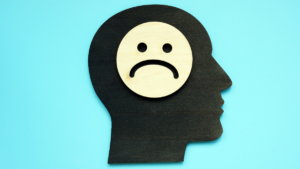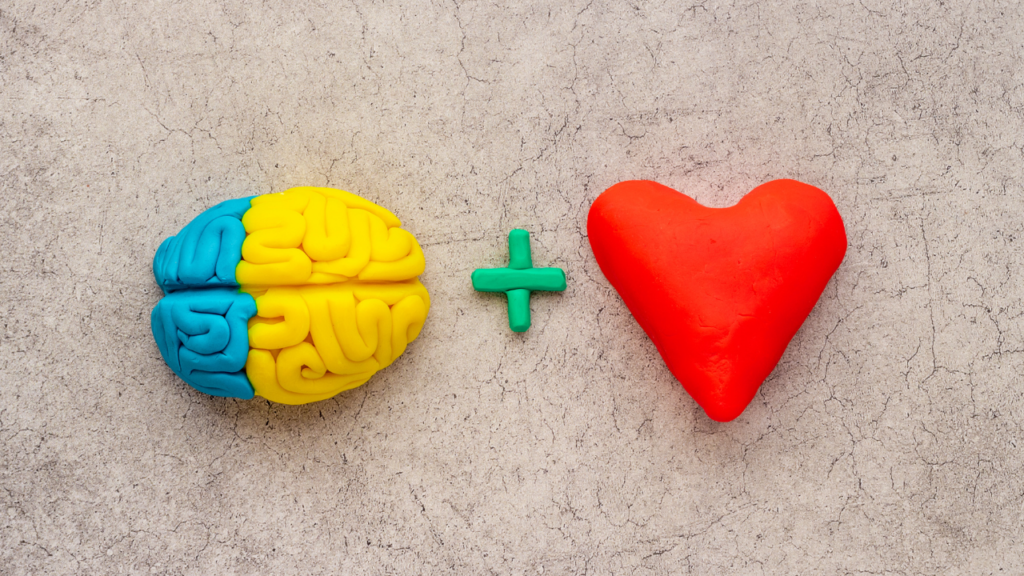Hello, you cool cats. In part 1, we started our discussion about the primal brain. In particular, we talked about the biological aspect of the primal brain. I call it the biological part of the brain because it is running based on our biology. The brain receives signals from the body – we are hungry, we are thirsty, we are cold, we need to poop, etc. The brain then acts to solve these problems and keeps us, the being, alive for another 5 mins. Our bodies are kind of like a crying baby, and our brain is like a strung-out mother trying to shove a bottle in the baby’s mouth in the hopes it stops crying and she can go back to sleep.
All of this makes sense, right? It is all logical and necessary for survival. Well, are you ready for the irrational and illogical?
In part 2, we are talking about the emotional part of the primal brain that does serve a purpose but, in reality, is the root of many of our problems and is the reason we do such dumb things at times. Some people refer to this part of the brain as the ‘thinking mind.’ It is always working in the background – thinking thoughts such as “did I turn off the stove,” “my boss is a d*nk,” and “what do I want to have for lunch?”
However, the thoughts our ‘thinking mind’ most often have are around our emotions. Generally, reviewing past events, such as the time you accidentally called your grade school teacher Mom or embarrassed yourself in front of your crush. You ruminant and obsess as to how you felt in a given situation. Guilt, frustration, fear, embarrassment? And it tends to focus largely on negative emotions.
Why?
Negative vs. Positive Thoughts
 You see, our primal brain has what is called a negativity bias. As per Wikipedia, a negativity bias means that even when you have two emotions/events/thoughts/social interactions, where one is positive and one is negative, and they are of equal intensity, the thing that was more negative in nature is going to have a more significant effect on one’s psychological state. Doesn’t that sound like a miserable way to live?! However, the truth of the matter is that a negativity bias has helped humans survive and evolve over the past 30,000 years. You see, 30,000 years ago, something that was negative generally = no bueno. I.e., Eating a mystery berry and developing explosive diarrhea = no bueno, trying to pet a saber tooth tiger = no bueno.
You see, our primal brain has what is called a negativity bias. As per Wikipedia, a negativity bias means that even when you have two emotions/events/thoughts/social interactions, where one is positive and one is negative, and they are of equal intensity, the thing that was more negative in nature is going to have a more significant effect on one’s psychological state. Doesn’t that sound like a miserable way to live?! However, the truth of the matter is that a negativity bias has helped humans survive and evolve over the past 30,000 years. You see, 30,000 years ago, something that was negative generally = no bueno. I.e., Eating a mystery berry and developing explosive diarrhea = no bueno, trying to pet a saber tooth tiger = no bueno.
Studies have shown that if people are presented with a photo of a group of people and in it are individuals who are purposely displaying angry expressions, people can pick out the angry-looking faces more quickly. That is because an angry face could mean potential danger. Like that look your mother could give you when you were being a little sh*t? Ya, I bet you learned to smarten up real quick to avoid impending danger. So you see, this negativity bias was and is vital for our survival.
Now, obviously, we live in a modern society where your chances of dying on a day-to-day basis are considerably lower. So why do we still have this stupid part of our brain?
What Does Our Primal Emotional Brain Do?
 Things of both negative and positive nature are still important, particularly when it comes to our emotions. Emotions give us insight into both good and bad things in our lives. The problem arises when we let our emotions run the entire show.
Things of both negative and positive nature are still important, particularly when it comes to our emotions. Emotions give us insight into both good and bad things in our lives. The problem arises when we let our emotions run the entire show.
And an adorable human fallacy is that people think they can control their thoughts and emotions through sheer willpower. Sorry to say, that is not the case. In fact, the more you try to ignore your feelings, the more intense they become.
Let’s do a little thought experiment: You are stressed from work and realize you need to get groceries on your way home. Suddenly you are down the candy aisle, and you see your favourite candy bar and start thinking how delicious it would be and that after a stressful day. You deserve to have it, and you aren’t even hungry. But, you are trying to lose weight. So today, you restrain yourself and don’t get it.
However, the thought of the chocolate bar doesn’t go away and you start trying to ignore the thought or distract yourself. Suddenly the urge to eat the chocolate bar becomes overwhelming, “My god, it would be amazing to have a chocolate bar right now!” Next thing you know, you are back at the grocery store buying three chocolate bars instead of just the one you might have bought earlier.
It’s almost like you don’t even know what happened, but you are back out in your car and have already eaten all three chocolate bars. Like most people who binge on three chocolate bars, you probably feel physically sick, and your thoughts have switched from how delicious the chocolate bar is to, “you are a loser. You failed again. You are never going to lose weight.”
So, down the negativity rabbit hole we go, and every self-affirmation and positive psychology hack under the sun can’t help stop the negative thoughts and emotions. What do we do?
Turning Our Thoughts Into Actions
 If you remember from part 1, the primal brain is a cranky old man that refuses to change. Damn crotchety emotional brain. “Great, Dr. Dan! So, how do I control my thoughts and emotions?!”
If you remember from part 1, the primal brain is a cranky old man that refuses to change. Damn crotchety emotional brain. “Great, Dr. Dan! So, how do I control my thoughts and emotions?!”
The thing is, you don’t. Thoughts and emotions are always going to happen. Our goal is to observe them, to possibly influence them and act despite them. Now, this is where the modern brain comes into play. Mark Manson, author of “The Subtle Art of Not Giving a F*ck”, calls it the observing mind – more on that in Part 3, but I love the analogy Mark Manson uses for these two minds.
You can imagine your primal brain as the driver of the car of your life. That’s right, you have the old man from the movie “Up” at the wheel. And your modern brain or ‘observing mind’ is riding shotgun attempting to provide directions to an old man who can barely hear or see and, quite frankly, doesn’t give a single f*ck to give and is going to go wherever he wants to go. What could possibly go wrong?!
Bring on the haters, as I am going to leave you on that cliffhanger for now. As I finish up here I am realizing this is going to be a possible 5 parter but, totally worth it, I promise. So stay tuned!
Always remember: small tweaks lead to massive peaks!
– Dr. Dan
References:






